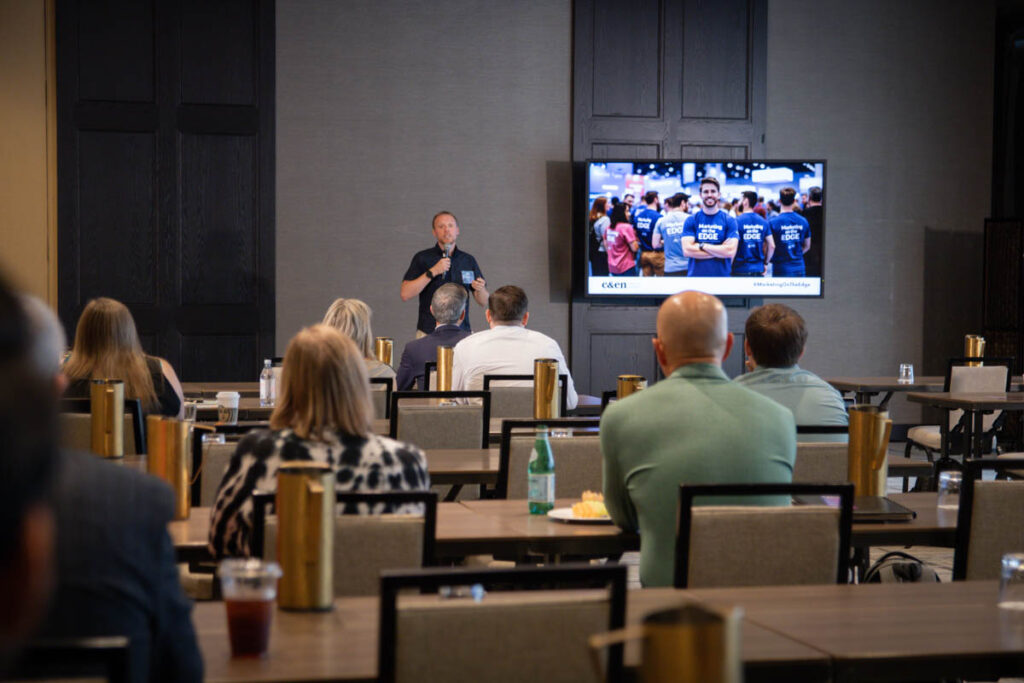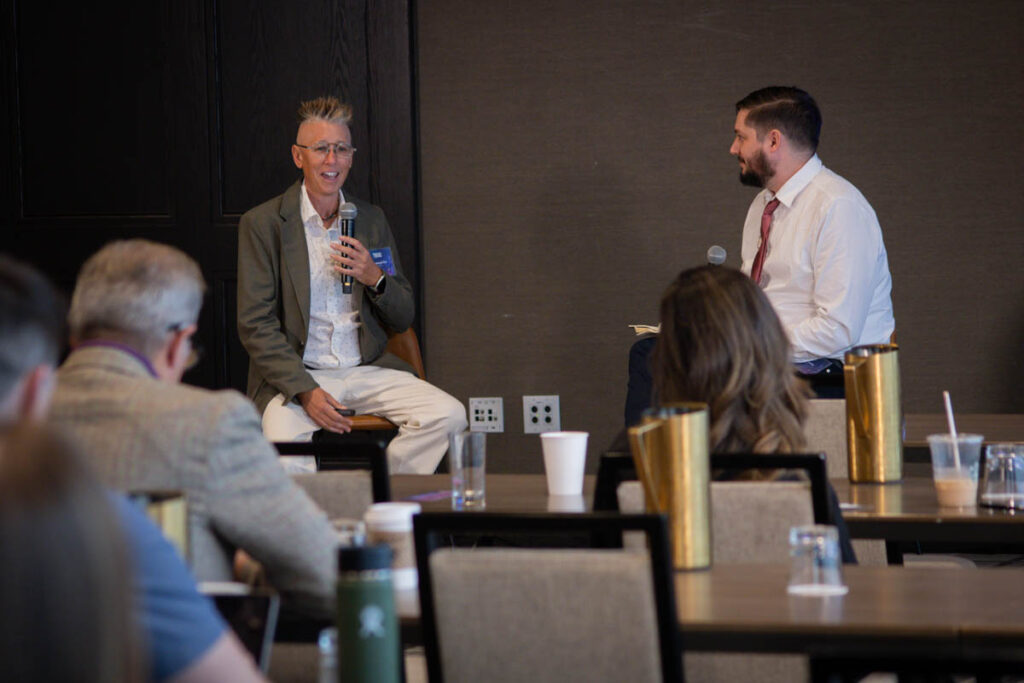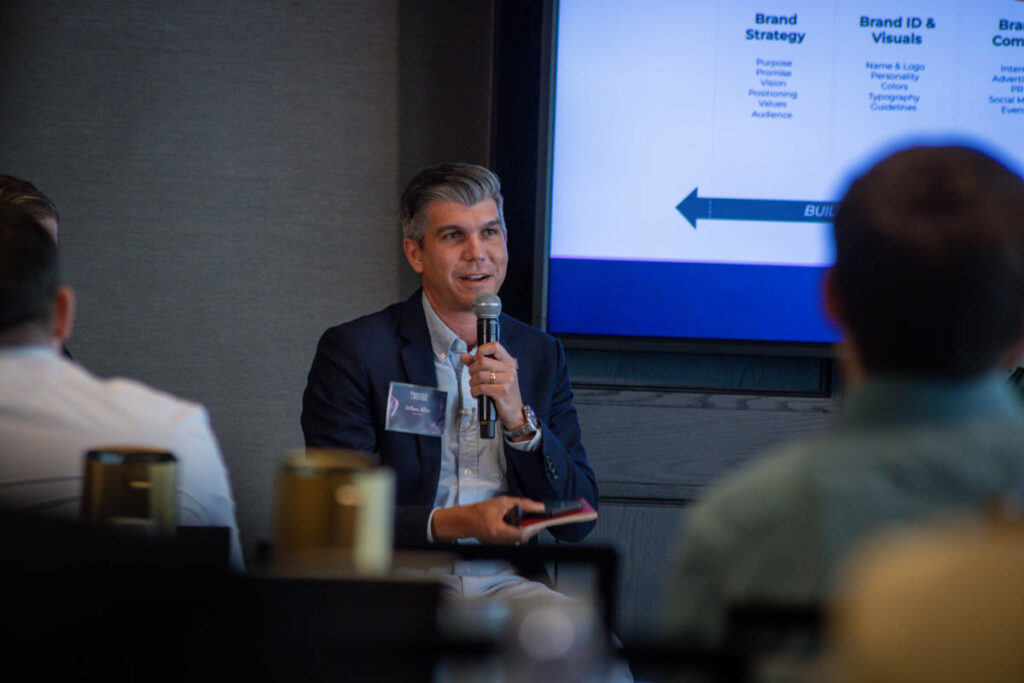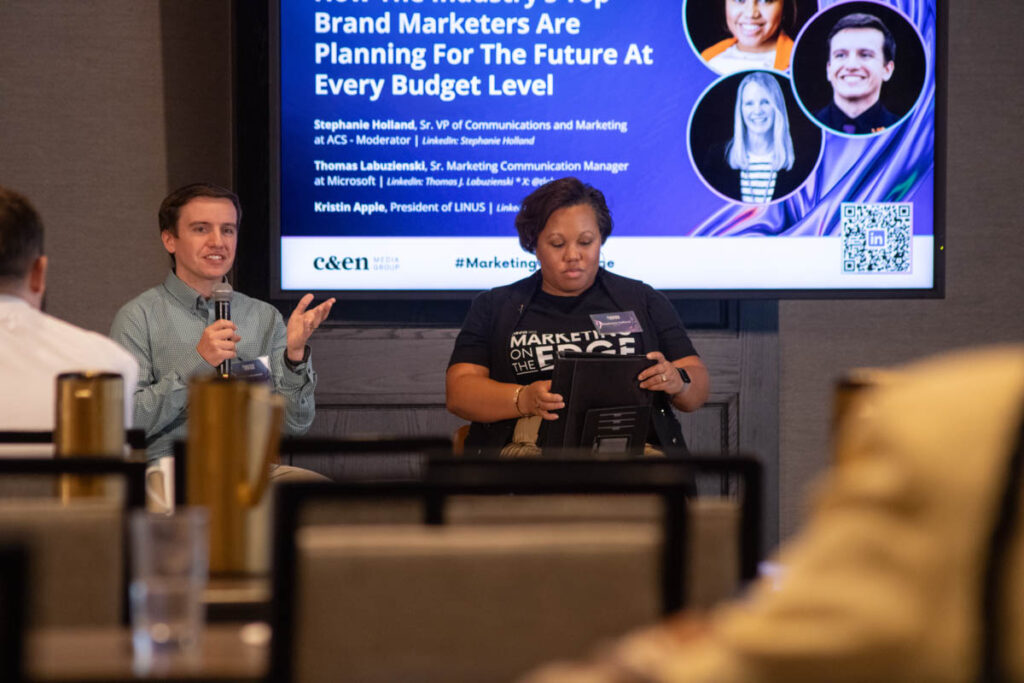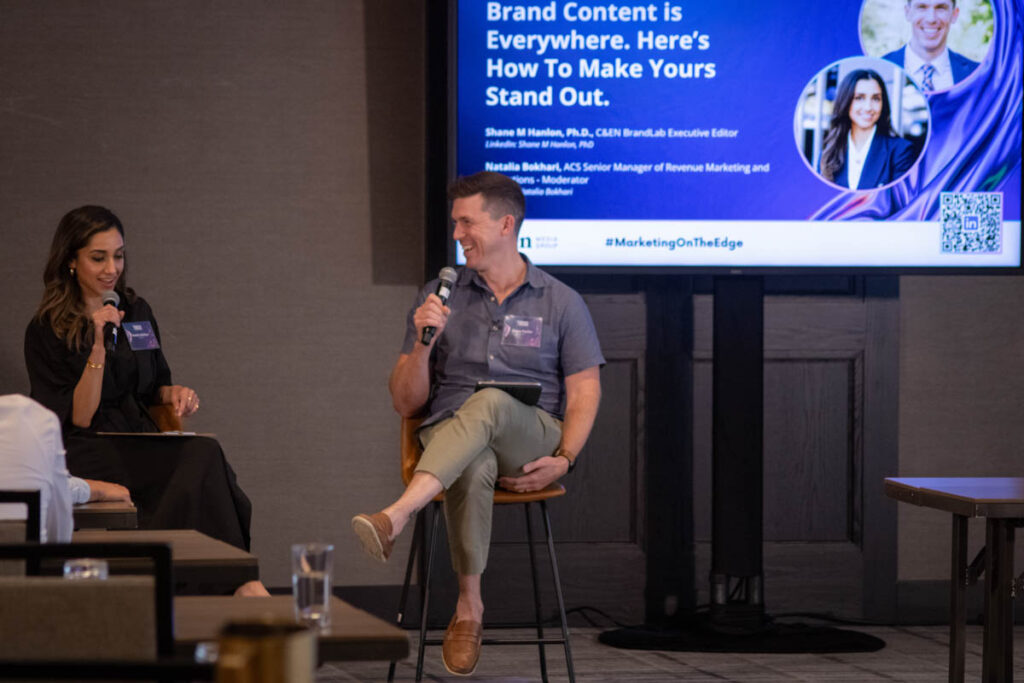Seismic changes are shaking the foundations of the marketing industry. Every day, a new trend emerges, promising to revolutionize our work. From generative AI and marketing automation technology to emerging social media platforms and the rising influence of digital creators, the landscape is evolving at a rapid pace.

On August 22, 2024, over 30 science marketers gathered for ACS Media Group’s 2024 Marketing Elements Summit. The meeting’s them, “Marketing on the Edge,” was a deep dive into how these transformative trends are reshaping our strategies and how we can adapt to harness their full potential.
Despite the whirlwind of changes, a common thread throughout the day was clear: trust and authentic connections remain bedrock principles that should guide all our efforts as science marketers. Below are a few key takeaways from our featured speakers.
AI will Change Science Marketing – This Is How To Build Your New Strategy for Success
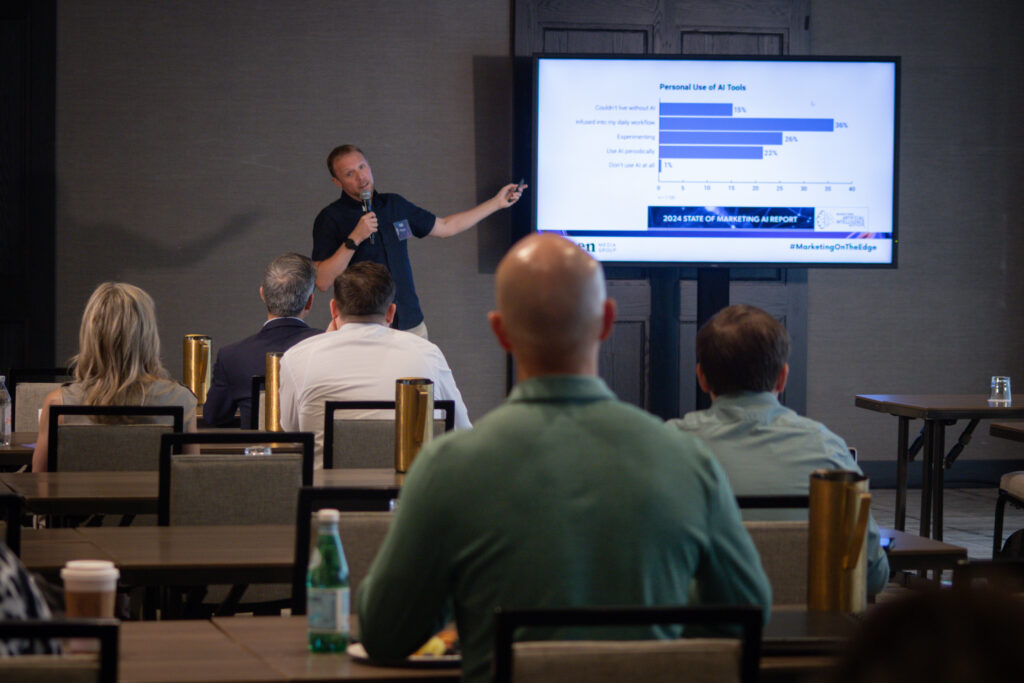
Paul Avery, founder and CEO of BioStrata, kicked off the event by talking about how science brands can win at content marketing in the age of artificial intelligence. Paul showcased the game-changing advantages of AI, from increased productivity to democratizing content creation, and emphasized the necessity of unique, humanized content to stand out in an increasingly AI-driven landscape. Here are a few highlights:
AI is revolutionizing video accessibility for small and mid-size businesses.
With AI video generation reaching Hollywood-level quality, these businesses can now create high-quality video content affordably without large production teams. For science marketers, this opens up a world of creative possibilities previously deemed too complex, expensive, or time-consuming. Imagine generating videos of your instruments from a static photo. Generative coding offers similar potential – enabling marketers to build things they previously didn’t have the skill, budget, or time to do.
Things that usually would have gone on the ‘too hard, cost too much, don’t know how to do it’ pile can now be done quickly and easily. [This] allows you to serve segments of your audience with interesting dynamic tools that you just wouldn’t bother with before because the market wasn’t big enough. But, if you can produce it in an hour, that’s a different game.”
– Paul Avery, BioStrata
AI is challenging traditional SEO.
Search engines struggle to distinguish between human and AI content. This could allow competitors to target your keywords with AI-generated blog posts. AI-first search engines and search generative experiences provide answers directly on search pages, potentially reducing traffic to your website.
Good content marketing in the AI age requires unique insights, bold perspectives, and humanization.
Now more than ever, science marketers must focus on high-value pieces like original research and expert opinions, not just an AI-generated remix of content already available. As AI-generated material becomes more common and challenging to sift through, people will crave and seek unique content. However, we, as science markets, should absolutely use AI tools to scale our human-first content. Not utilizing these tools would be a significant missed opportunity and put us behind our competition.
How Science Marketers Can Be More Effective Communicators on Social Media – And Help The World in the Process
Chemical Kim, a prominent science educator and influencer with over 1 million followers, joined C&EN BrandLab Senior Editor Jesse Harris for an insightful conversation. They explored how science brands can leverage STEM influencers to connect with their target audiences and do good. Here are some key takeaways:

Creating a page for yourself is the secret to authentic brand connections on social media.
Marketers need to experience how it feels to create content and get comments firsthand. If you’re looking at, as a brand, to tap into the social media world, you need to spend time there.
Choose influencers who are doing good, and let them be themselves!
To ensure a successful collaboration with a content creator, brands should choose someone positive and impactful and let them shine with their true voice. It’s important to select influencers who can authentically promote your brand while staying true to their style and message. Kim shared two videos where she collaborated with brands. Although both were well produced, the one where Kim was able to speak in her own authentic language outperformed the example where the brand wrote the script.
The reason that brands do come to creators like myself is because they recognize that we have a following. We can reach a good amount of people. But the recognition also needs to be that, you’re picking me, so you you need to give that allowance to the creator to put together the content.”
– Chemical Kim
There’s a disconnect between creators and brands.
Brands need to understand that platforms like Instagram, Facebook, and TikTok want to make money and have an expectation that brands will put funding behind their video content. Because of this, brands have the power to make videos appear on ‘For You’ pages. Science brands should be pushing these paid ad campaigns for their content collaborations, and many are not.
How We Can Improve Trust In Science – And What It Means For Brand Building, Storytelling and Communications
C&EN Editor-in-Chief Nick Ishmael-Perkins gave a compelling case for improving trust in science by addressing the “contextualization deficit.” Drawing from his International Science Council report on the topic, Nick shared how science communicators can build trust by understanding and addressing the contexts of different audiences. Here are some highlights:

People don’t fit into static blocks of science believers and non-believers.
It’s possible that you can firmly believe in science on one issue but be skeptical on another. For example, a study in Australia found that people who were big proponents of the COVID-19 vaccine were not necessarily big proponents of action on climate change. Many factors, including economic order, location, experiences, identity, and local knowledge, contribute to how we position ourselves around science issues and will change from one issue to the next.
Most of us experience science not as a practice, but as a set of issues mediated by various institutions.
We must recognize that trust in these institutions vary greatly depending on the person, region, history or experience. In some places, if a government tells you to do something, you are going to be wary. There are many instances of this across the world, particularly in marginalized communities.
We can develop global policy, but we need to be aware of the fact that people are not engaging with global policy. They are engaging with a particular issue in their particular context, determined by institutions, history, and identity.”
– Nick Ishmael-Perkins, C&EN
Technocratic attempts to address science messaging have failed.
What we should be doing is asking ourselves a set of questions about how we prepare ourselves to understand and integrate context, knowledge, and awareness into our campaigns and communications. For example, we must ask, “Where has the mandate come from for science and policy to address this problem?” “Who are the potential winners and losers in the way the problem is framed?”
How Brand Management Has Changed Over the Past 5 Years – And What’s Coming In The Next 5

Our brand management panel explored how recent societal pressures have revolutionized brand management over the past five years and unveiled cutting-edge strategies to future-proof companies. The dynamic discussion was moderated by Peter Jap, senior brand manager at ACS, and featured insights from Kate Stabrawa, president of Horseshoe Communications, and Dillon Allie, president and CEO of HDMZ. Here are some of their key insights:
Humanizing brands is now expected and fosters genuine connections.
Consumers see brands as friends and want them to reflect their values. This trend is common in consumer goods and is emerging in life sciences. Twist Bioscience, for example, creates synthetic DNA but engages on social media with a friendly, human tone.
Knowing when to add a personal touch is also crucial. For instance, a social media manager can craft empathetic replies and sign with their initials to foster genuine connections when the moment calls for it.
People generally say, ‘We want to generate leads.’ Well, that can be a lagging indicator of what people think about your brand. Do they want to be your friend? Do they believe what you’re selling them? Do they want to tell their friends about you? Those are all things that precede getting leads.”
– Dillon Allie, HDMZ
Use data and storytelling to convince C-Suite executives to spend money on brand awareness, not just performance marketing.
The annual Kantar BrandZ study consistently shows that companies with strong global brands outperform famous portfolios like the S&P 500. Leverage this insight and internal data to craft compelling narratives highlighting how your company stacks up against key competitors and how strategic investment in brand awareness can strengthen your market position and fuel long-term growth.
Leverage internal insights to monitor external brand wellness.
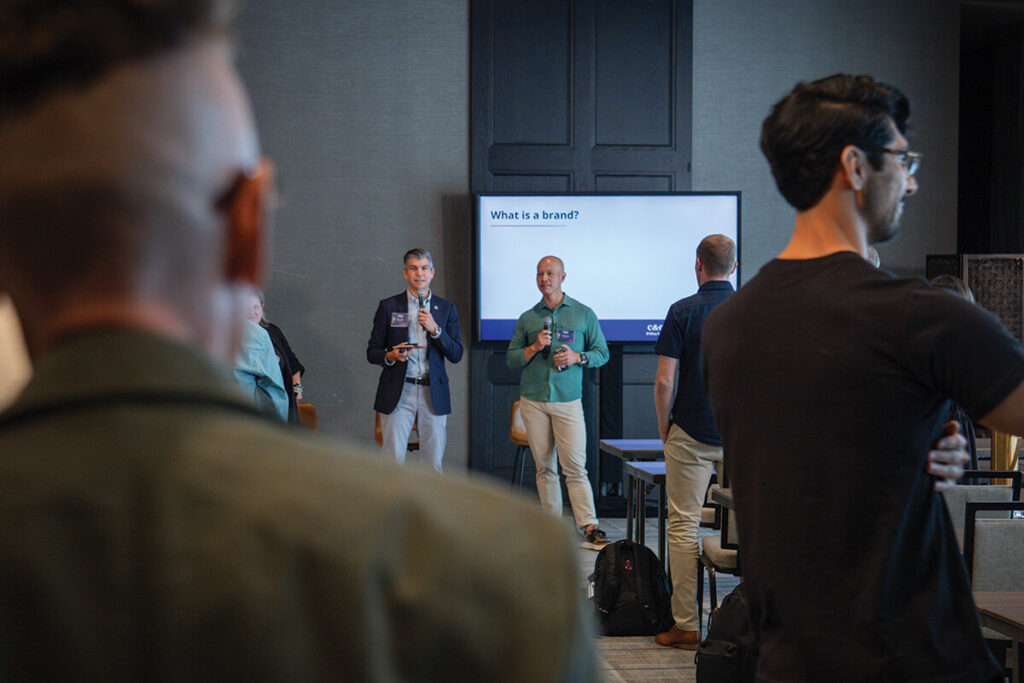
Brand sentiment studies are extremely valuable and can help you measure your brand’s meaning to the people you serve. However, you should also leverage internal data. Conduct biannual reviews of media coverage, share of voice, and social media buzz against your competitors. Gather employee feedback through focus groups. Collaborate with HR to track trends in job applications and candidate quality. These internal insights can help you identify your brand’s external strengths and areas for improvement.
Brand management today demands speed, awareness, and agility.
While not every situation requires a response, internal discussions must happen quickly to decide if your brand’s purpose and promise call for action. If they do, respond swiftly. Unlike before, when brands could be set and left alone, today’s societal pressures and expectations require constant vigilance.
How The Industry’s Top Brand Marketers Are Planning For The Future At Every Budget Level
In our dynamic keynote session, industry leaders shared their unique perspectives on steering the future of marketing amidst common challenges. Stephanie Holland, senior vice president of communications and marketing at ACS, led the panel with Thomas Labuzienski, senior marketing communication manager at Microsoft, and Kristin Apple, president of LINUS. Here are a few highlights:
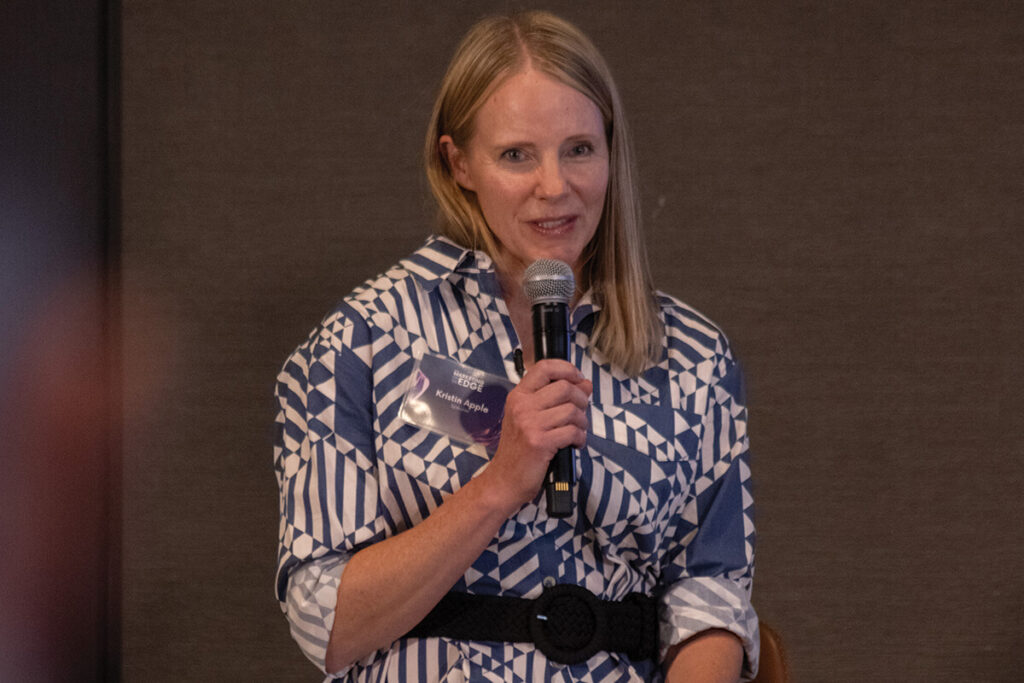
Building a brand is arguably the most important task you can do as a marketer.
Brand is your future-proof asset. It is your vision and the emotional connection with your audience. By investing time in defining what your brand stands for, what it means, and what people will fight for, you create a resilient future for yourself, your team, and your company.
Trust can take years to build and minutes to lose.
Trust is the number one factor eroding confidence in marketing and company interactions. As science marketers, we can cultivate and keep trust by showing up in the places where our clients are and by demonstrating authentic interests and care for the environments where our products are delivered.
We’ve taken some approaches at Microsoft as we think about marketing Azure Quantum Elements to scientists. We need to make sure that we’re thinking about responsible quantum computing, responsible AI. So, we’ve invested a lot of time and resources working with different partners to make sure we’re one of the leaders as we think about those responsible initiatives.”
– Thomas Labuzienski, Microsoft

Marketers should invest in personal connections.
Trade shows continue to dominate science marketing budgets for their ability to drive customer relationships and sales. For science marketers with limited budgets, LinkedIn or small in-person events also create excellent opportunities to engage, demonstrate genuine care, and foster meaningful thought leadership discussions. Additionally, interactive digital events such as webinars with Q&A sessions provide a cost-effective and scalable way to create authentic connections and facilitate two-way dialogue.
Storytelling is crucial to bringing a new product to market.
While listing features and capabilities is essential, they only resonate when framed within a compelling narrative. By illustrating how your product addresses a real, significant problem that people care about, you can engage your audience on a deeper level. This approach not only helps build your brand but also generates leads and drives sales.
Brand Content is Everywhere. Here’s How To Make Yours Stand Out.
The grand finale of “Marketing on the Edge” featured an enlightening session with C&EN BrandLab Executive Editor Shane Hanlon, filled with examples of how science brands can stand out in a crowded landscape and create engaging content. Moderated by Natalia Bokhari, ACS senior manager of revenue marketing and operations, the discussion highlighted case studies on crafting captivating content and demonstrated how BrandLab helps clients achieve superior ROI. Here are some key takeaways:

Effective content requires both a strong message and a deep understanding of your audience.
Telling a great story and having a strong message is important, but if you don’t know who you’re communicating with, it falls flat. It’s not enough to have a compelling message; you need to understand the audience you’re delivering it to. Always tailor your content to your audience, no matter who you’re talking to.
Small custom touches can have a significant impact.
For example, simply updating an eBook cover to something more engaging led to more leads for a BrandLab client. Similarly, switching the narrative style of a white paper to focus on a key partnership rather than the usual style of heavy scientific citations helped another client exceed their lead generation goals in no time.
There’s a science behind personal narrative and injecting those voices in there and how it resonates with folks and how people trust one another and how they trust the content we’re coming out with because of that. That mix is something we really put first. We really care about that message and how we’re communicating and the trust we’re putting in there.”
– Shane Hanlon, C&EN BandLab
Avoid creating one-off pieces of content.
When you create a single piece of custom content for an audience, they may find it interesting. But, if that’s the only time that audience sees your brand associated with or talking about that topic, it’s less likely to resonate with them. A truly robust custom campaign with multiple touchpoints allows you to tell a more meaningful story and helps your company achieve long-term, quality engagement.
Thank you for supporting our “Marketing on the Edge” Science Marketing Event!
We want to extend our heartfelt gratitude to our incredible speakers and attendees—your invaluable expertise and engaging questions made the 2024 Marketing Elements Summit a resounding success. Thank you for being part of this community. We look forward to welcoming you to our future events.
Subscribe for More “Marketing on the Edge” Content
Photos by Rouba Abou Chabke, truebyrou




